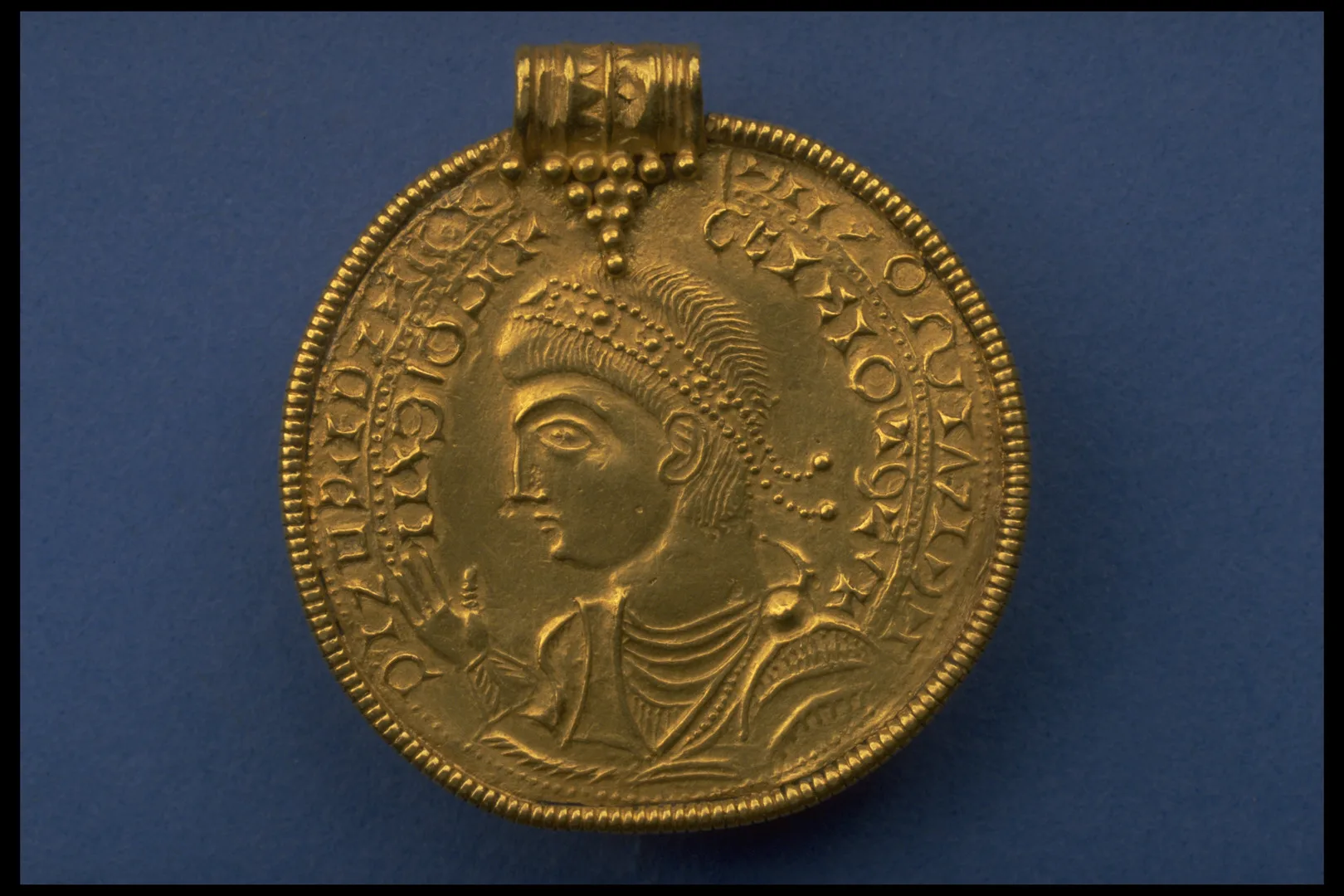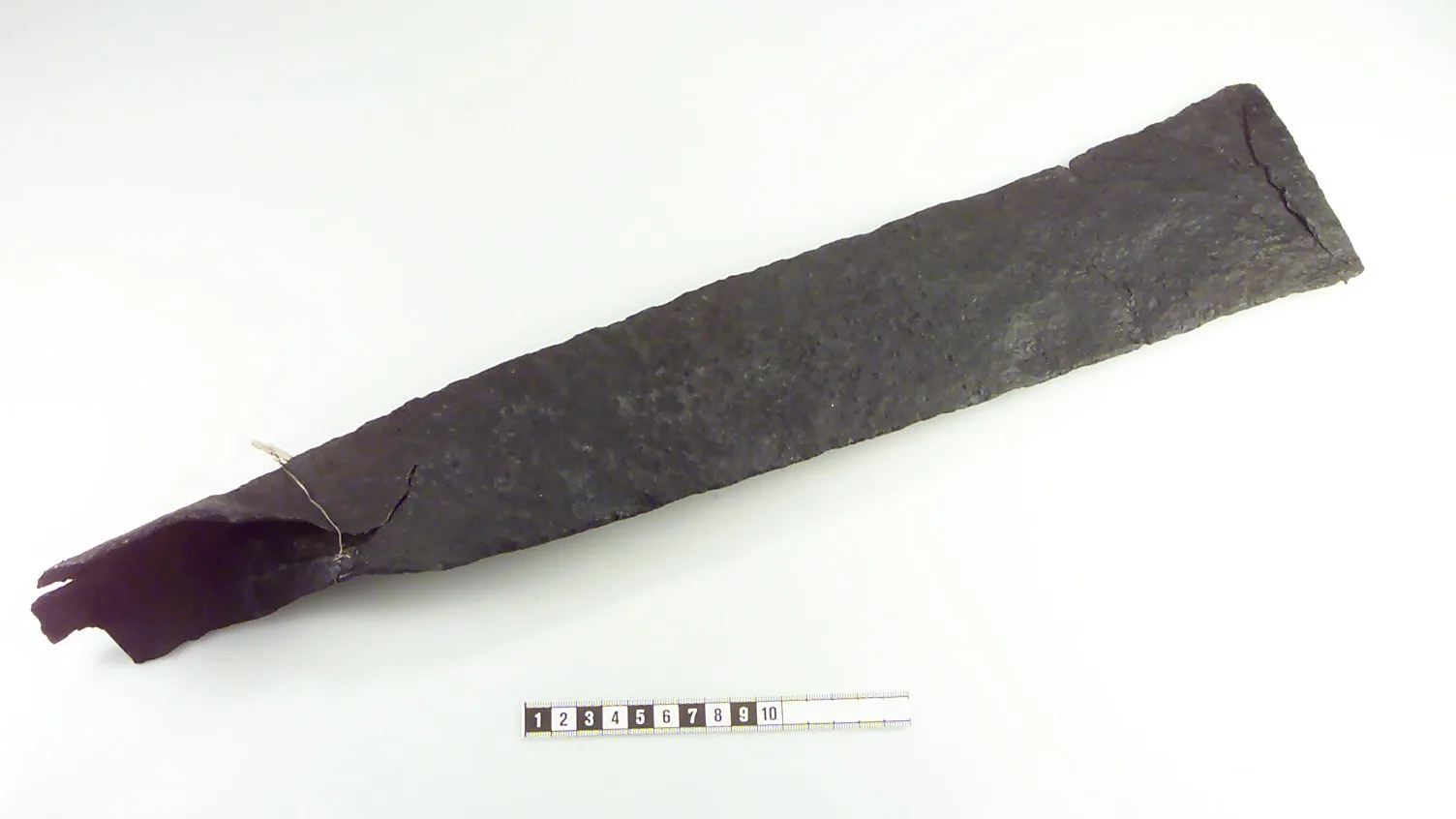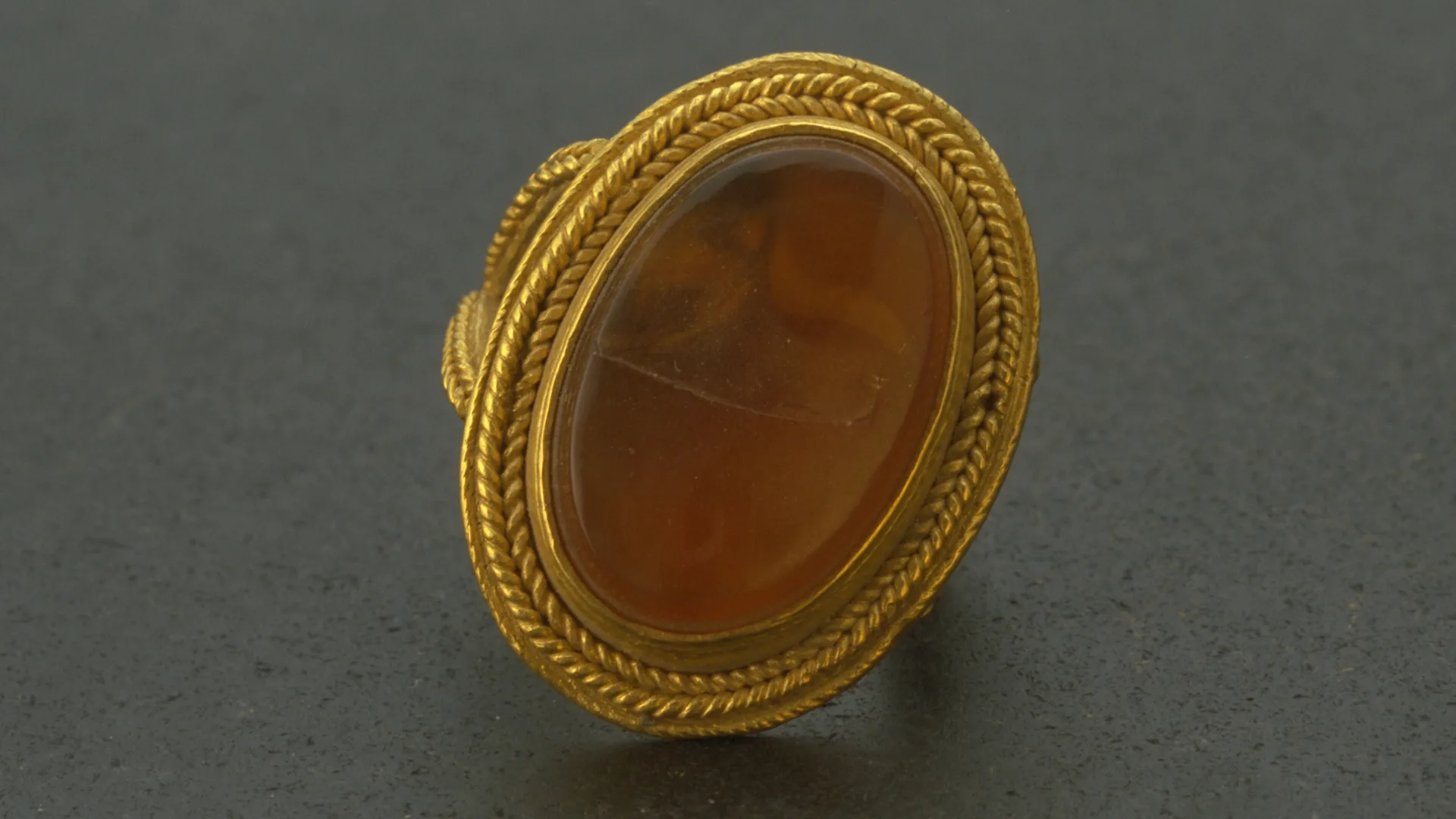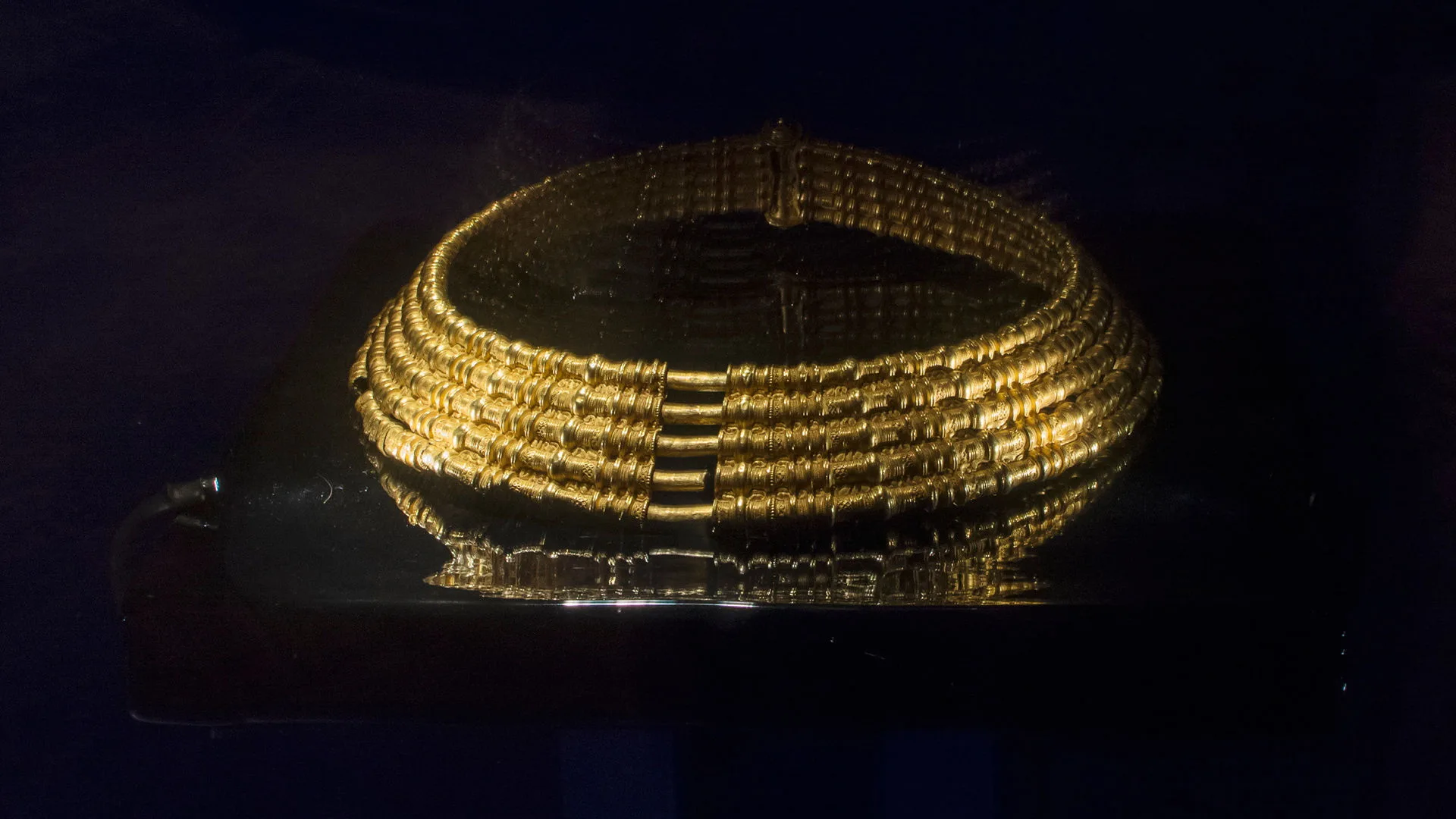A chieftain’s portrait from Bohuslän
Bronze Age
1700 BC – 500 BC
Iron Age
500 BC – AD 1100
Viking Age
AD 800 – AD 1100
Inside a burial chamber, the grave of a man was uncovered, containing, among other items, a sword, two gold finger rings, and various vessels. The man had also worn a magnificent belt, adorned with bronze fittings that were both gilded and silver-plated, and inlaid with semi-precious stones.
The discovery was made at Lilla Jored, in Kville parish, Bohuslän. The following year, in 1817, a gold medallion was found nearby, featuring a profile portrait. It is in fact a Scandinavian imitation of a Roman emperor, depicted with a diadem, finger rings, and a typical Roman circular brooch fastening the cloak at the shoulder.
The letters around the portrait are unreadable, merely garbled copies of Roman inscriptions. It is entirely possible that the image represents the chieftain buried in the grave, portraying himself with a degree of imperial grandeur reminiscent of a Roman emperor.

Medallion
On view at Historiska museet in the exhibition Guldrummet





